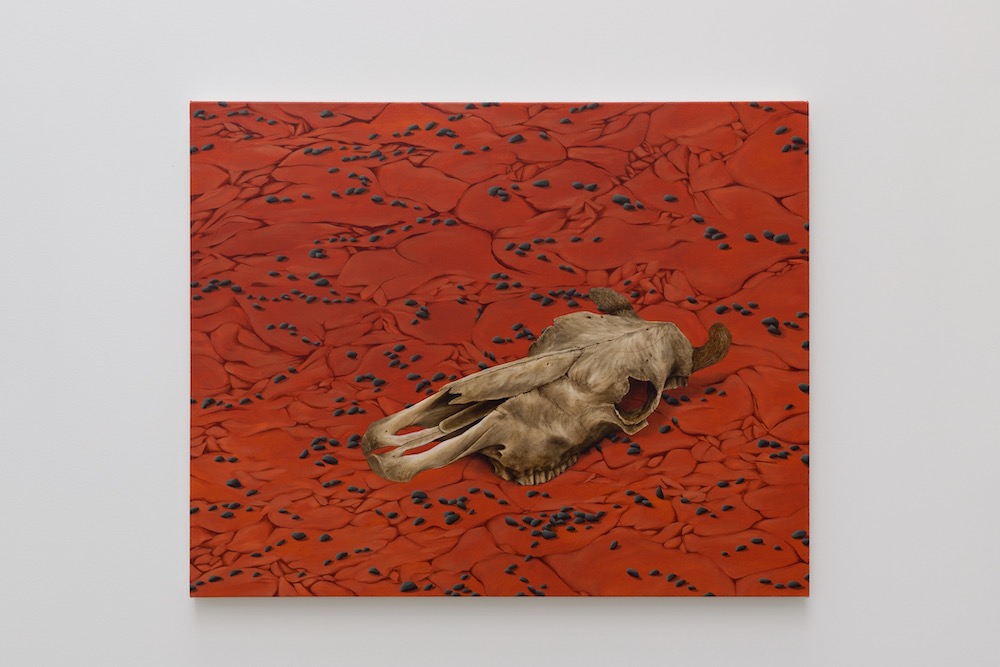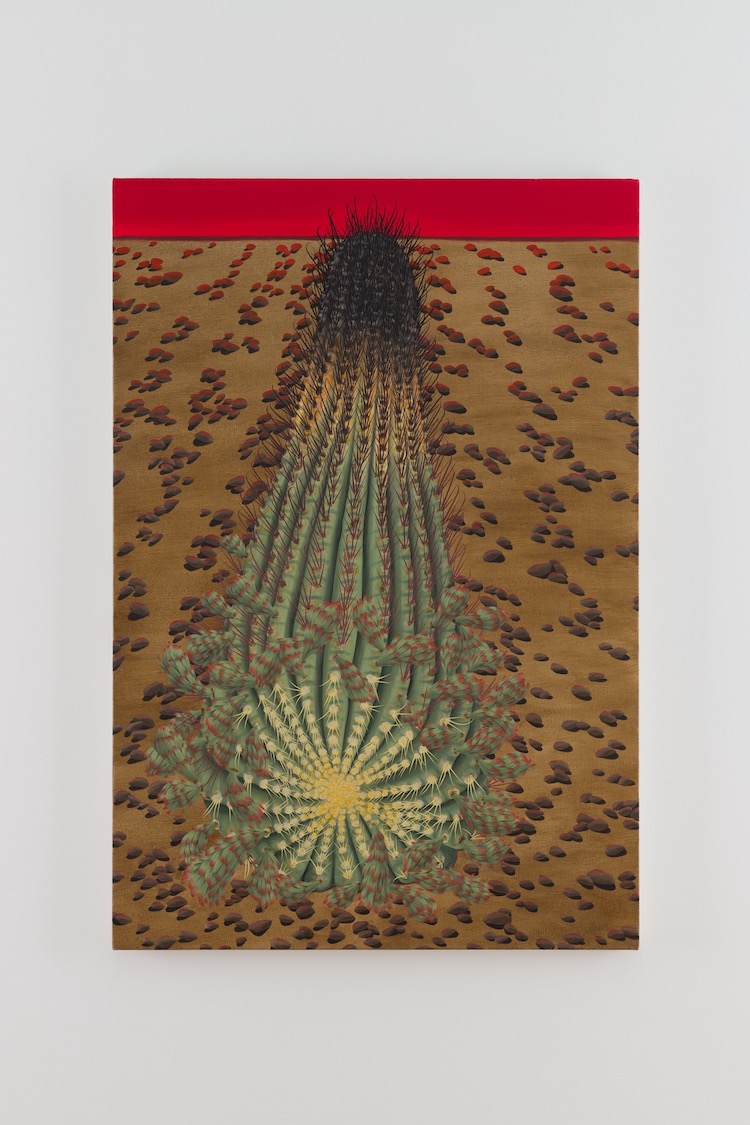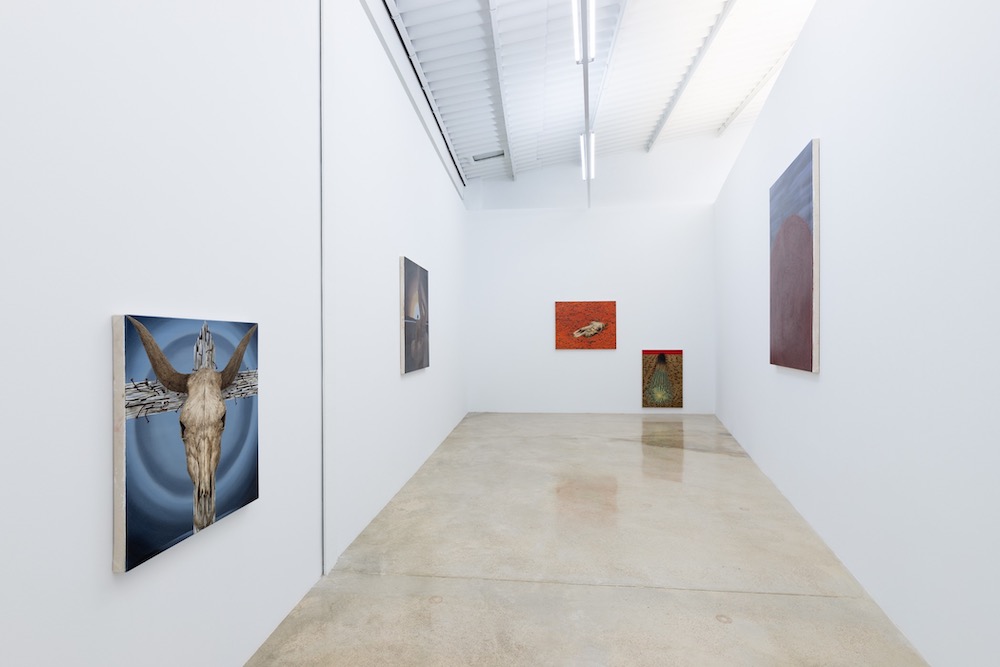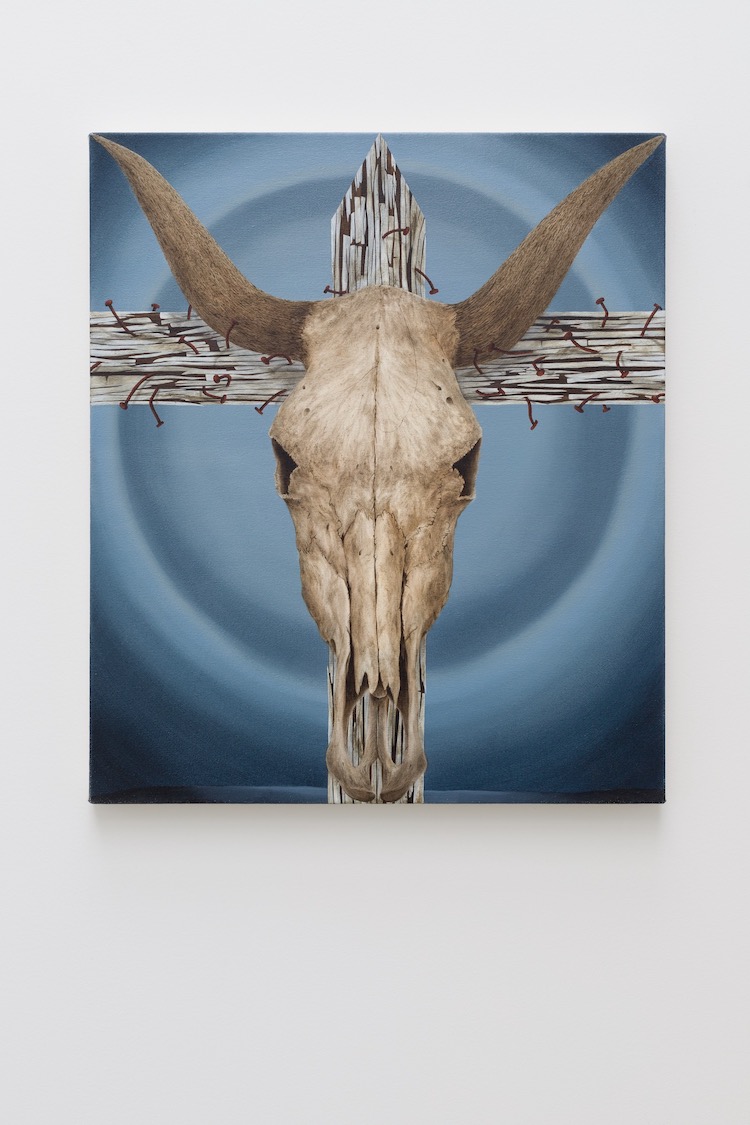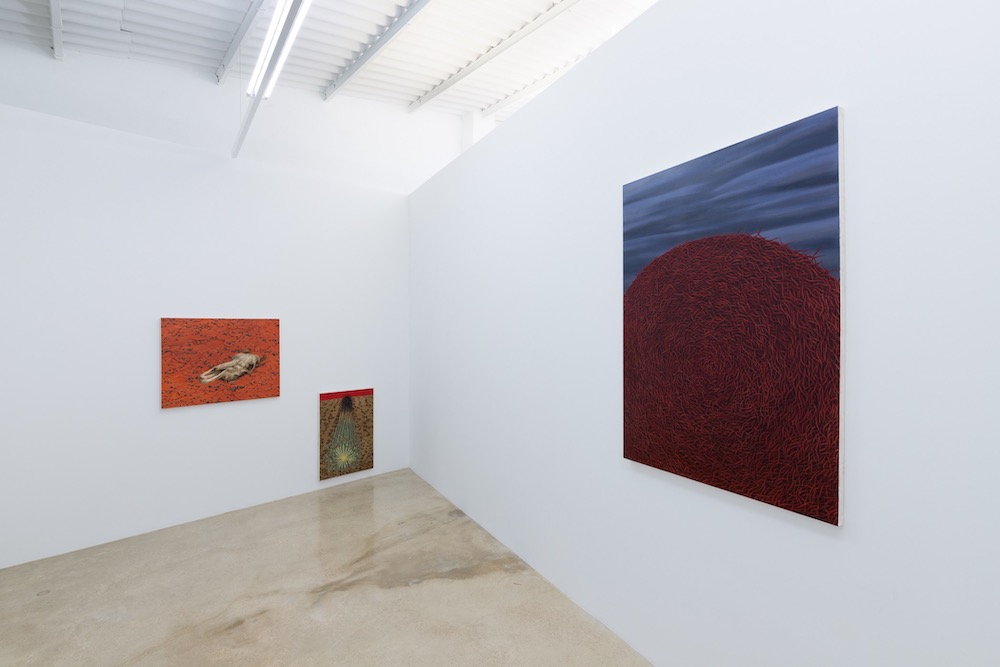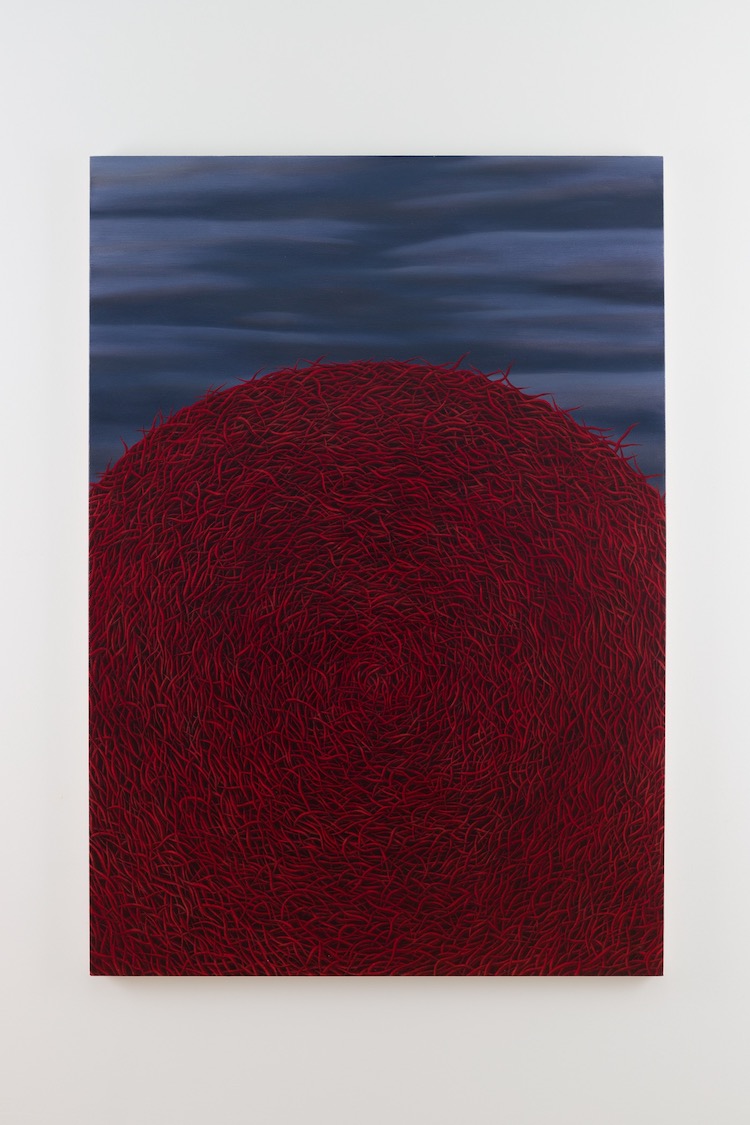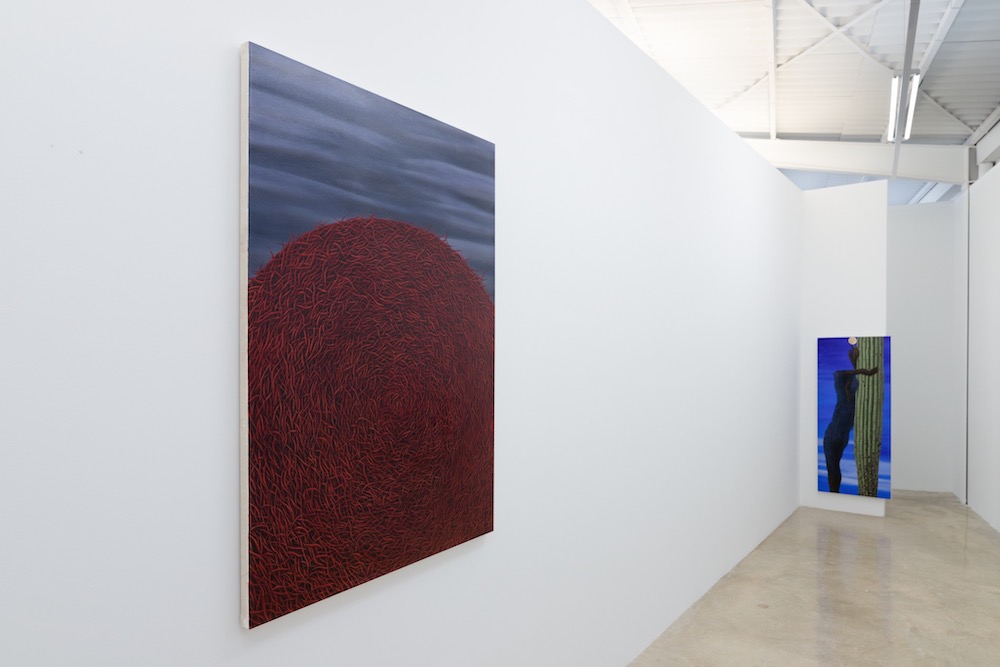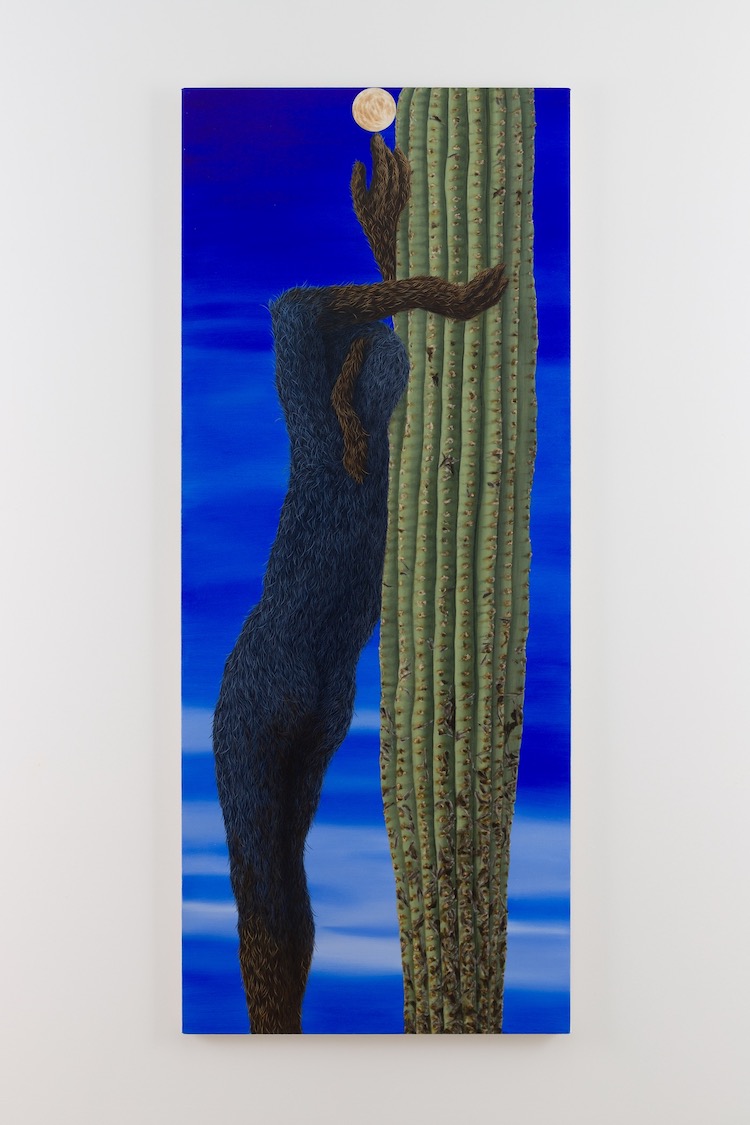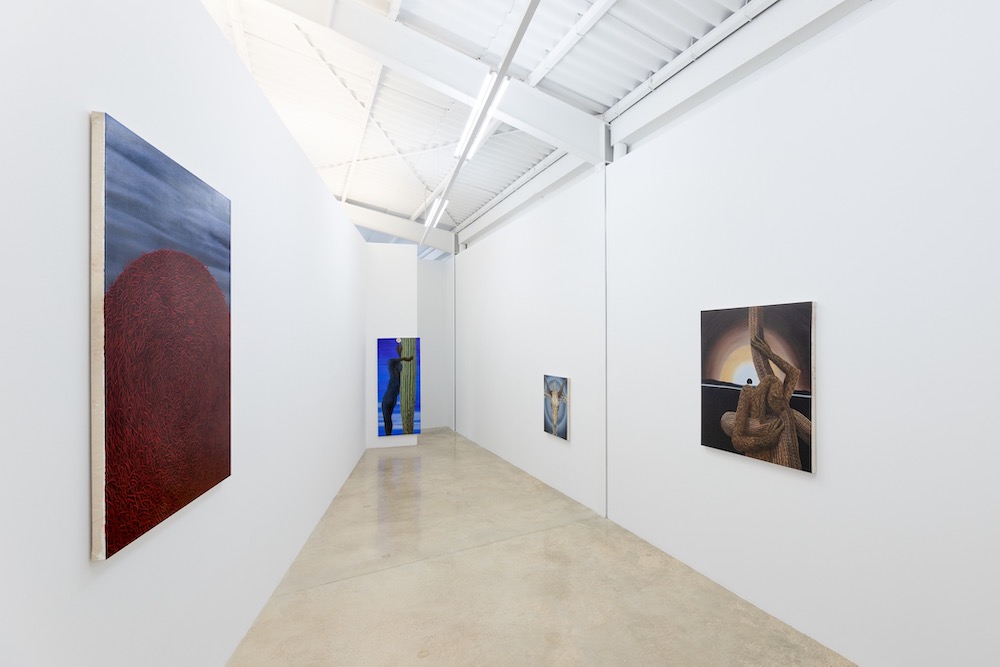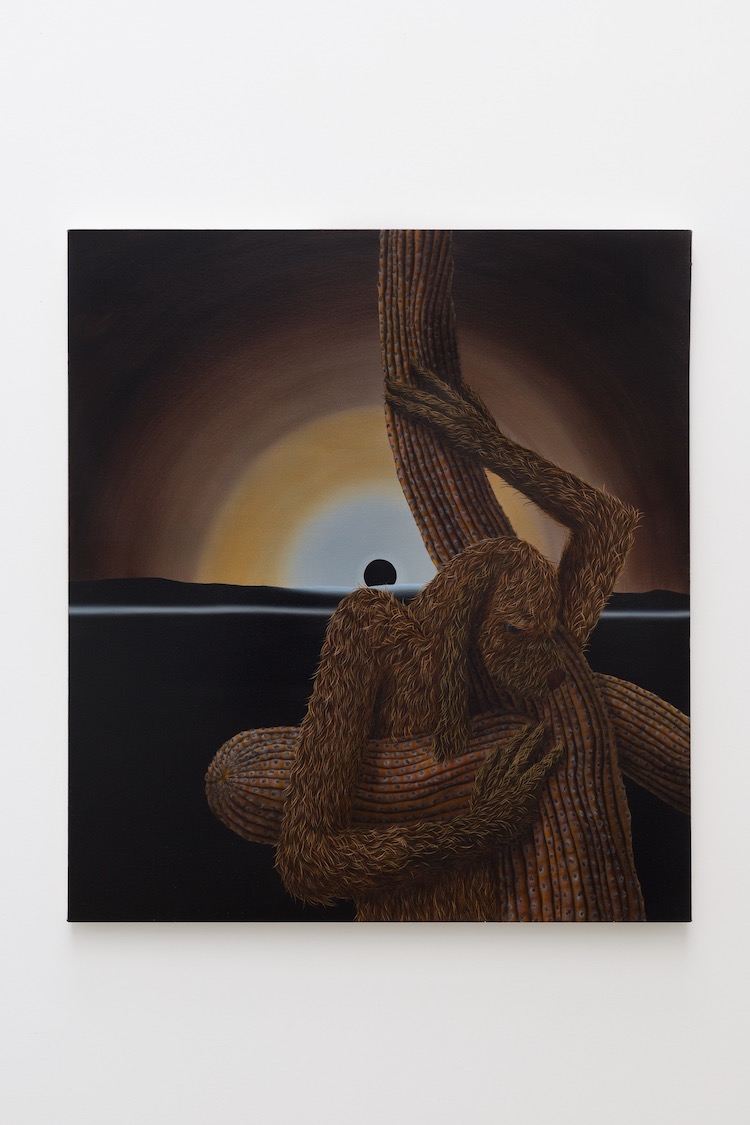To a painter, the picture is a collection of ideas that are conveyed through the handling of paint by the movement of a brush on the surface of a canvas. Drew Dodge uses this enigmatic process to express his wonderment of queer spirit as it transmogrifies throughout figuration and abstraction. After a notable solo debut with Steve Turner in LA earlier last year, and a successful presentation at Untitled in Miami, the Arizona-born artist is currently having his European solo debut with L21 in Palma, on Mallorca in Spain.
Fitting the show title, the new series of works explores the often inexplicable sensations and affinities. In an effort to speak to these nuance subjects, he reaches for evocative elements which, when carefully composed and meticulously rendered, form nearly mystic visuals imbued with subtle yet impassioned symbolism. Enticing and spellbinding on the surface, the paintings comprising Enigma are built using a limited vocabulary of imagery that, when put in different, often unexpected relationships, construct puzzling scenes. With a continuous rhythm regularly revolving around the center of the image, the depiction of elegant movements, and a symphony of minute visuals, these six paintings entwine with each other in a dynamic exchange of states and emotions. A true harmony of seemingly random marks somehow congeals into pebbles, ground, hay bales, or paint flaking fences, forming a large, comprehensive narrative within each image and the series as a whole. Through this storyline, Dodge is providing an empathetic site for queer folks to experience refuge, reassurance, and truthful representation of their experience without forfeiting ambiguity.
Such interest in creating an environment for queer subjectivity to sense belonging, freedom, and celebration, is coming from a need to confront mainstream culture’s desire to flatten queer identity to sanitized, loud, and normative ideals. Instead, the inanimate elements such as the dirt, the rocks, and the skull become sentient versions of themselves as they transform into metaphors for the subjects Dodge is invested in. Extensive in terms of possible interpretation while familiar enough for immediate recognition, these ubiquitous elements are also providing a meditative aspect to the creative process. Starting off with a desert, the scenery he connects with from his upbringing in Arizona, the artist is making a direct connection between the desolated landscape and queerness as a blank canvas that exists outside normativity, separated from mainstream culture and economies.
"Queerness and paint are both ameboid and do not follow normative law, so I welcome their liminal characteristics, which, when coupled, communicate surface, body, and psychological sensations," Dodge explains the connection between his subject matter and the fundamental quality of his technique. And such deep and personal investment in elemental aspects of his practice navigated him to developing a body of work that by all means reveals his devotion to both. With the accentuated use of repetition, a truly monumental amount of slow, pleasureful strokes that in the end construct an exciting image, it's the sensation of paint that feeds his lingering patience and fastidious attention. At the same time, this absorbing process is providing an endless playground for exploring such sensations. Both in its physical form as a painted image, as well as emotive form when speaking about the personally important and defining experiences. By finding forms in nature that echo queer bodies, sensations, and spirits, Dodge is reflecting on the liminality and synergy of both through an implosion of gently flowing strokes that form his flirtatious and carefully seductive imagery. - Sasha Bogojev

